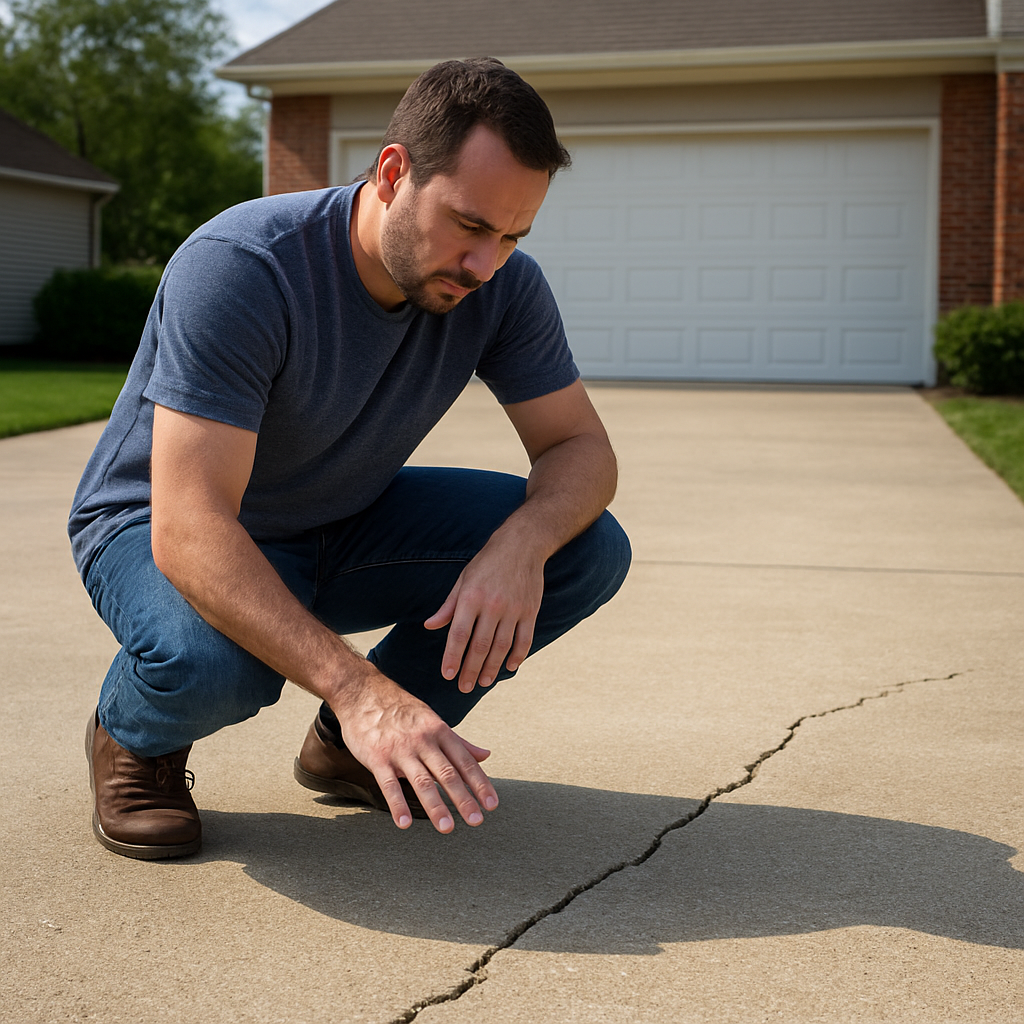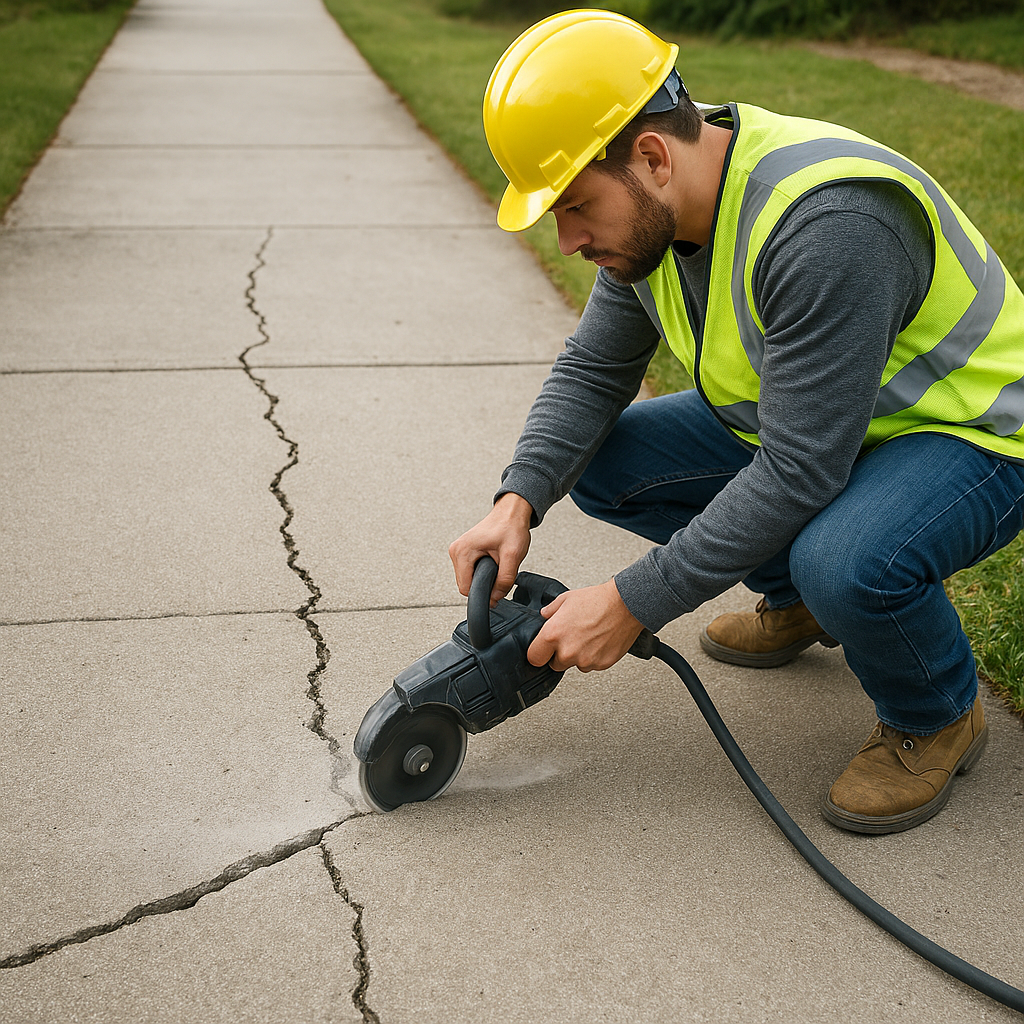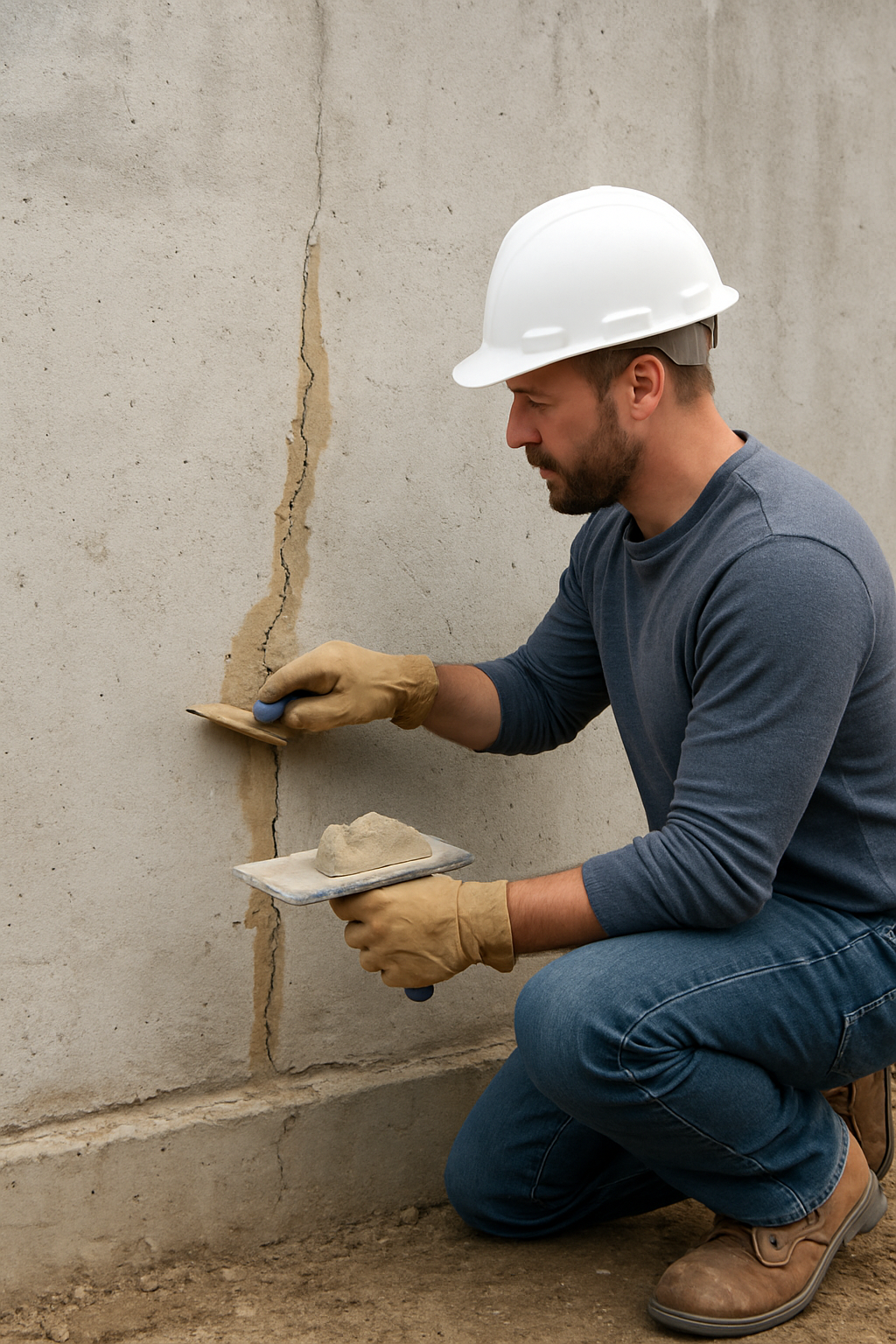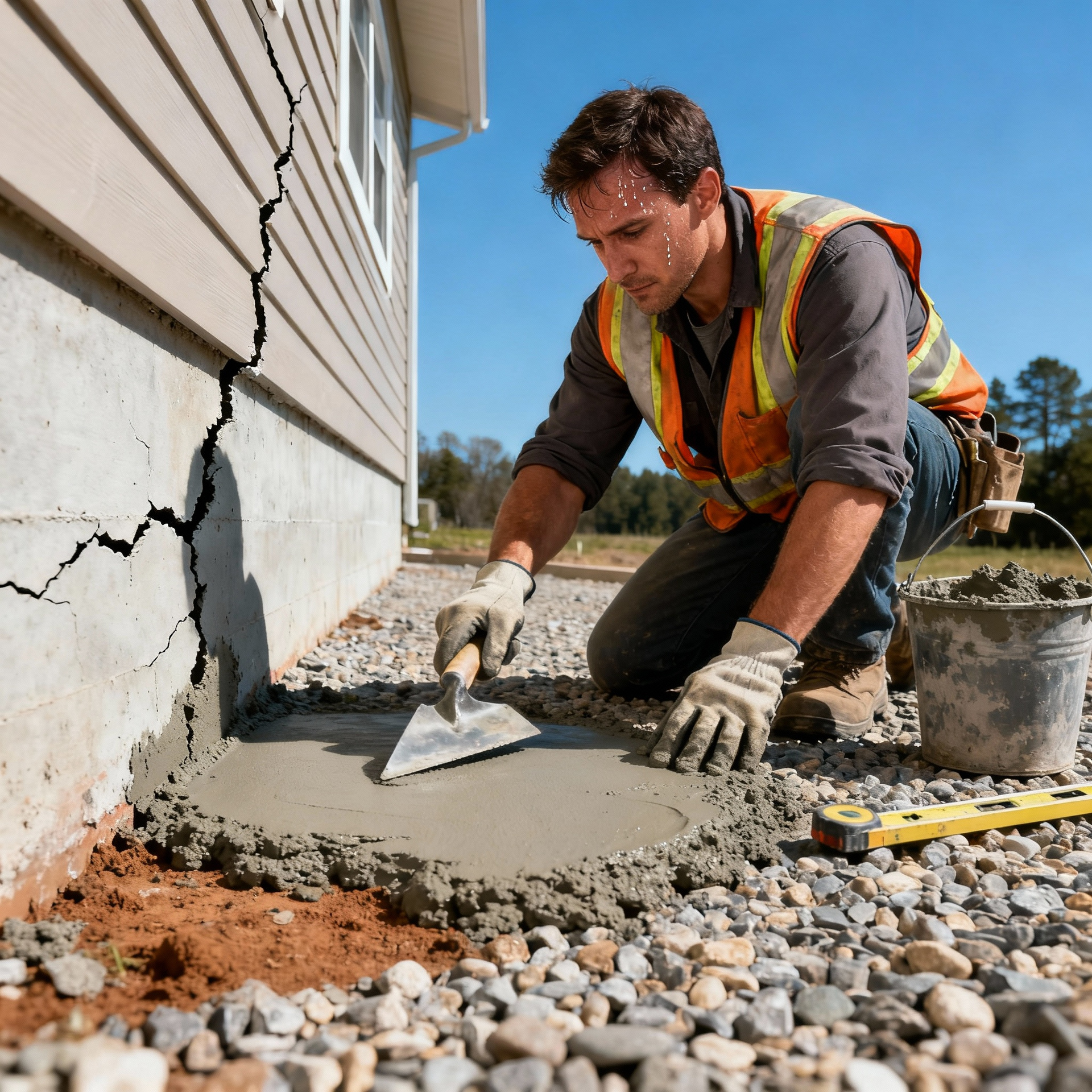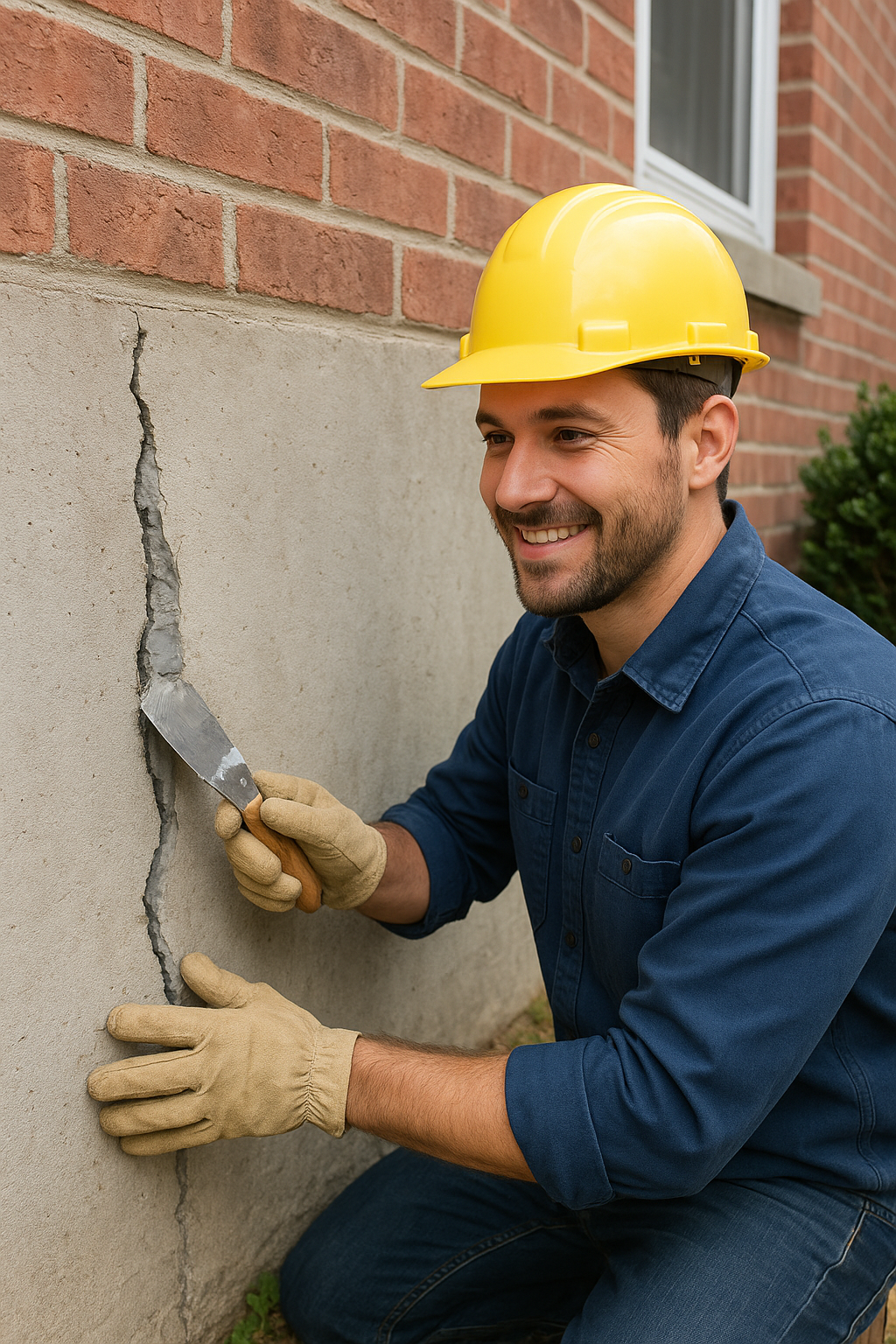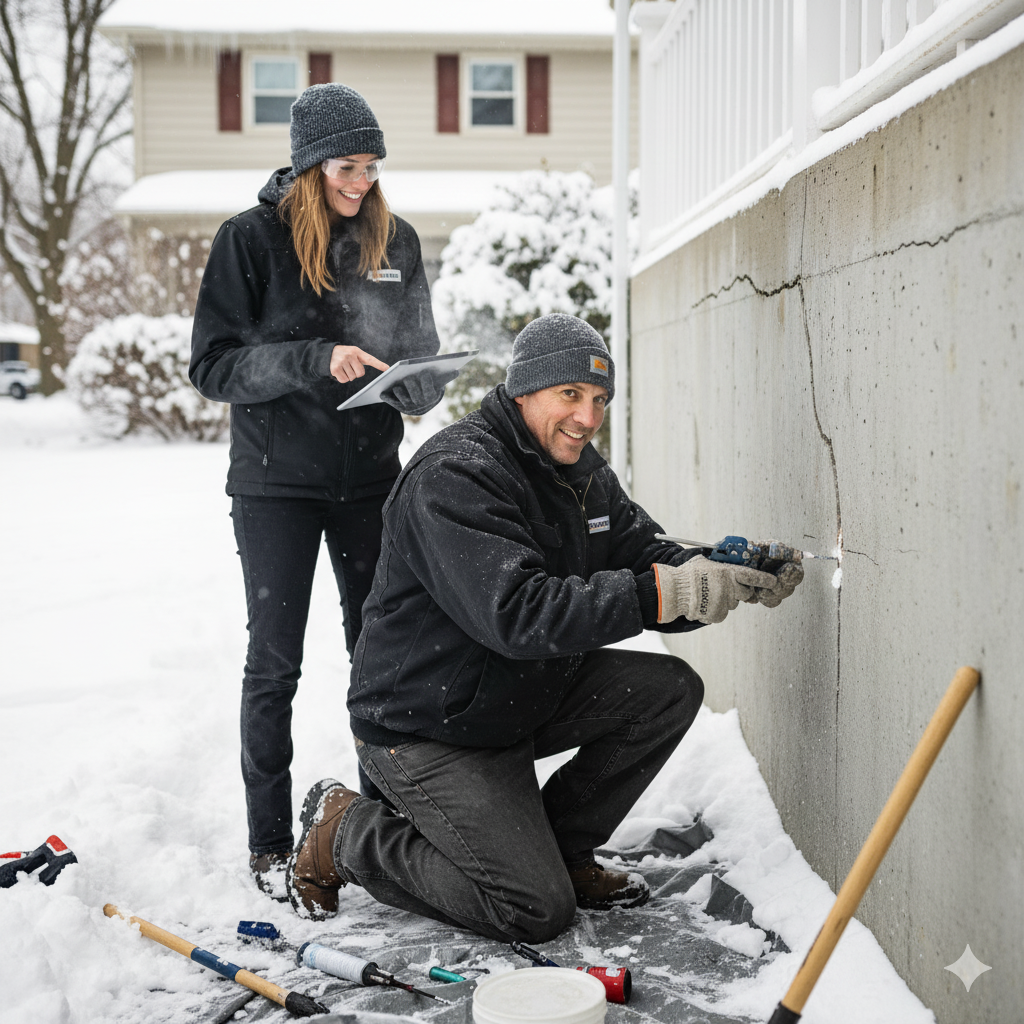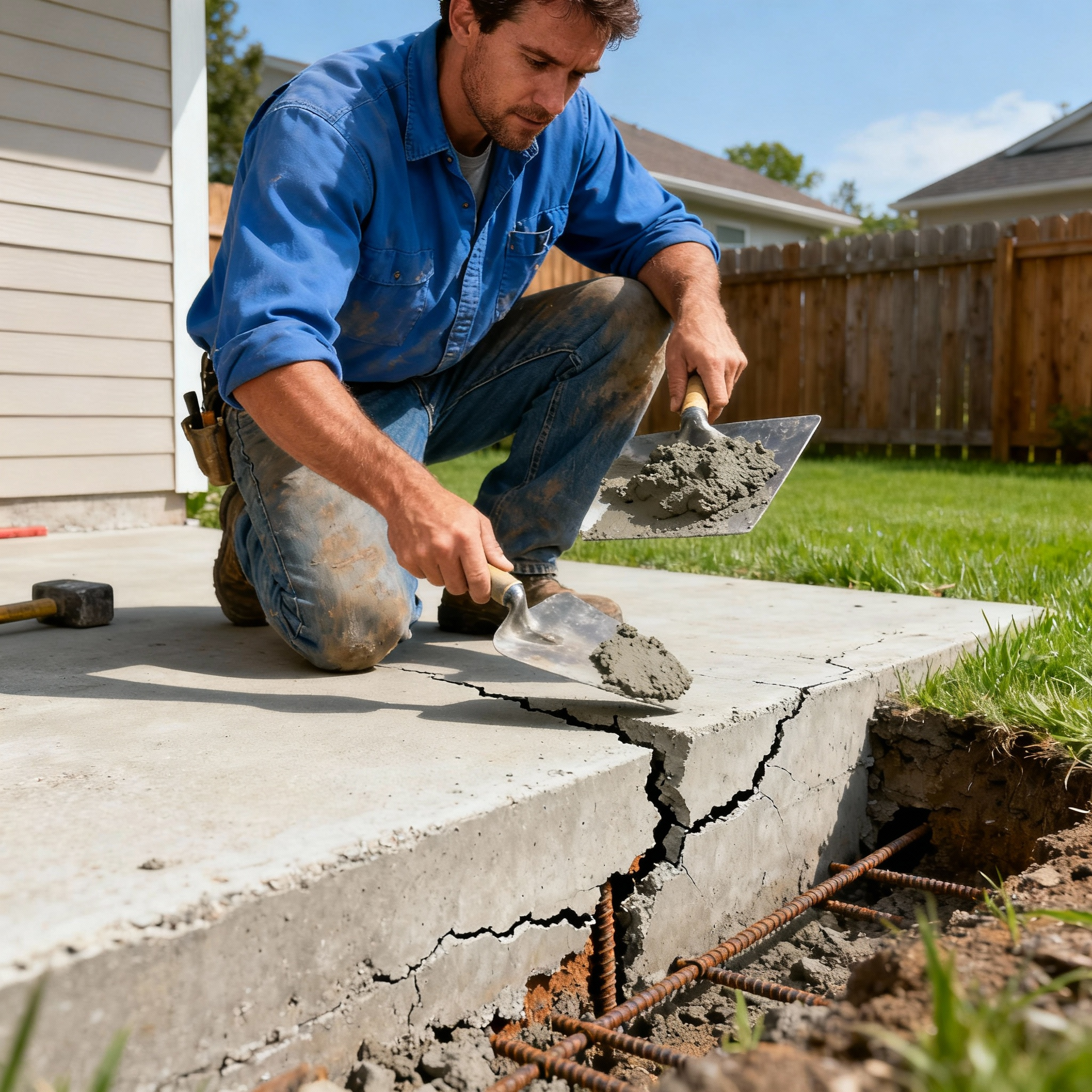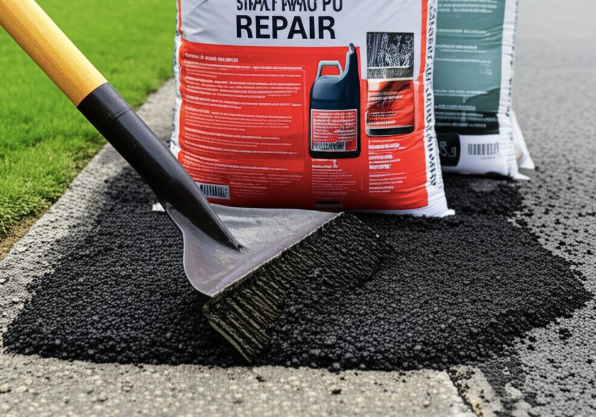The Ultimate Guide to Stamped Concrete For Your Home
Have you ever looked at your plain, gray concrete patio or driveway and wished it had a little more personality? You’re not alone. While standard concrete is functional, it doesn't always bring the "wow" factor. But what if you could get the high-end look of natural stone, brick, or even wood, but with the strength and affordability of concrete?
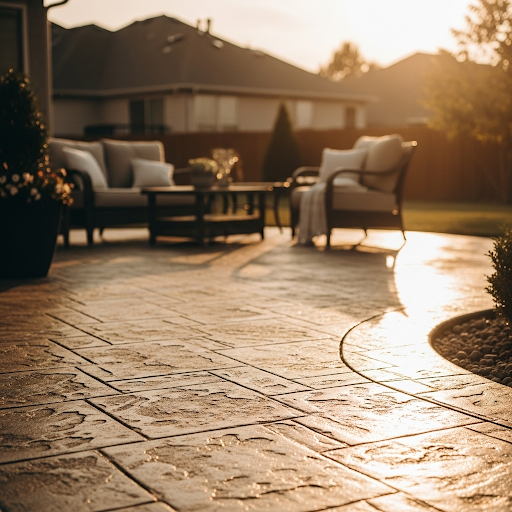
That’s exactly where stamped concrete comes in.
It’s one of the most popular and versatile ways for homeowners in Youngstown and across Ohio to completely transform their outdoor spaces. If you're looking for a beautiful, long-lasting surface that boosts your curb appeal without breaking the bank, you've come to the right place. Let's talk about everything you need to know.
So, What Exactly Is Stamped Concrete?
Think of it as decorative concrete with a serious style upgrade. The process is pretty straightforward, but it requires a lot of skill to get just right.
First, we pour a new slab of concrete. While the concrete is still wet and workable, we apply a color hardener. Then, large, flexible polyurethane "stamps" are pressed into the surface. These stamps are molded from real materials, allowing them to imprint the texture and pattern of things like flagstone, slate, cobblestone, or even wood planks directly into the concrete.
Once it cures, the surface is detailed, cleaned, and sealed. The final result is a stunning, durable surface that mimics expensive materials at a much more friendly price point.
The Big Benefits: Why Ohio Homeowners Love It
Choosing a material for your patio or driveway in Ohio means thinking about our unique weather—from hot, humid summers to freezing winters. Stamped concrete is a fantastic choice for our climate for several reasons.
Incredible Durability: Unlike individual pavers that can shift or allow weeds to grow through the cracks, stamped concrete is a solid, reinforced slab. It stands up incredibly well to heavy traffic and the freeze-thaw cycles that can wreak havoc on other surfaces.
Aesthetic Versatility: This is the fun part! Your options are nearly limitless. Whether you want the rustic charm of a cobblestone walkway or the sleek, modern look of large slate tiles for your patio, there’s a pattern and color combination for you. You can truly customize the look to match your home’s style.
Lower Maintenance: Keeping your stamped concrete looking great is surprisingly simple. A good cleaning with a hose and mild detergent now and then is usually all it takes. To keep the color vibrant and protected, it’s a good idea to have it resealed every few years—a quick and easy job for a pro.
Great Value: You get the premium look of materials like natural stone for a fraction of the cost. Because the installation is often faster than laying individual stones or pavers, you can save on labor costs, too. It’s an investment that adds significant visual and financial value to your home.
Popular Stamped Concrete Patterns & Designs
Wondering what’s possible? While the choices are vast, a few patterns are perennial favorites among Ohio homeowners.
Ashlar Slate: This pattern creates the look of cut slate stones in various rectangular sizes. It offers a clean, organized, yet natural appearance that works well for patios and pool decks.
Brick: If you love the classic, timeless look of a brick patio but worry about shifting and weeds, a stamped brick pattern is a perfect solution. You can get herringbone, basketweave, or running bond styles.
Flagstone: For a more natural, irregular look, the flagstone pattern is a top choice. It mimics the look of large, flat stones and is ideal for creating a rustic, inviting outdoor living space.
Wood Plank: Yes, you can even get the look of a wood deck with the durability of concrete! This pattern has become incredibly popular for its modern-yet-rustic appeal, and you’ll never have to worry about rot or splinters.
For more visual ideas, browsing a home design site like HGTV's patio inspiration gallery can be a great way to see what styles you're drawn to.
Where Can You Use Stamped Concrete?
The beauty of this material is its versatility. It's an excellent choice for almost any outdoor flatwork. Here are the most common applications:
Patios: This is the most popular use, and for good reason. It’s the perfect way to create a beautiful and functional stamped concrete patio for entertaining, grilling, or just relaxing.
Driveways: A stamped concrete driveway makes a powerful first impression and dramatically boosts your home’s curb appeal.
Walkways & Sidewalks: Connect your outdoor spaces with a decorative walkway that complements your home and landscaping.
Pool Decks: Stamped concrete is a great option for pool surrounds. We can even add a non-slip additive to the sealant for extra safety around wet areas.
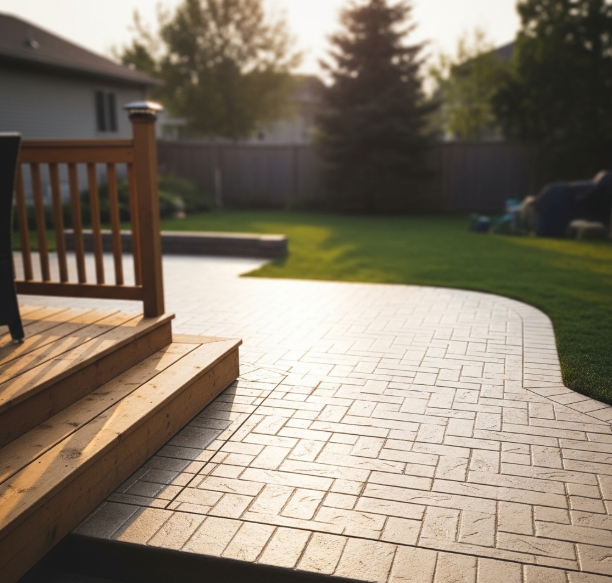
What to Expect During Installation
A professional stamped concrete installation is a multi-step process that blends science and artistry. Here’s a simplified look at what we do:
Site Prep: We start by excavating the area and building a solid, compacted base of gravel. This is perhaps the most critical step for ensuring a long-lasting, crack-free surface.
Forming: We build a wooden frame to hold the concrete in the desired shape.
Pouring: We pour the concrete, ensuring it's the right mix and thickness for the job.
Coloring & Stamping: This is where the magic happens. We apply color and then carefully press the stamps into the surface at just the right time.
Curing & Cutting: The concrete needs to cure and harden. After it has gained some strength, we cut control joints to guide any potential cracking in the future.
Washing & Sealing: Finally, we wash off any excess color and apply a protective sealer. This sealer not only protects the concrete from moisture and stains but also makes the colors pop. For more information on the importance of this final step, the Concrete Network offers a great overview of sealers.
Frequently Asked Questions About Concrete
We get a lot of questions from curious homeowners, especially those who enjoy a good DIY project. Here are some quick answers to common queries.
Is it possible to pour concrete yourself?
Yes, it's possible for very small projects like a mower pad or a mailbox footing. However, for larger jobs like patios or driveways, the risk of costly mistakes is very high. It's a heavy, time-sensitive material that requires specialized tools and expertise.
What is the 1/2/3 rule for concrete?
This is a classic recipe for a strong concrete mix: 1 part cement, 2 parts sand, and 3 parts aggregate (gravel).
Can I just pour concrete over dirt?
You should never pour concrete directly on topsoil or dirt. A proper, compacted gravel base is essential to prevent the slab from cracking, shifting, or sinking over time.
What is the 4 2 1 rule for concrete?
This is another mix ratio, often used by volume: 4 parts crushed stone, 2 parts sand, and 1 part cement. The right ratio depends on the project's specific needs.
How thick should a concrete slab be?
For a standard patio or walkway, 4 inches is typical. For a driveway that needs to support vehicles, 5 to 6 inches is recommended, often with rebar or wire mesh for added strength.
Is it cheaper to pour my own concrete?
For a small project, you might save money on labor. But when you factor in tool rental, material delivery, and the high cost of fixing a mistake (which often means tearing it all out and starting over), hiring a professional is often more cost-effective and provides peace of mind.
What is the 90 minutes rule for concrete?
This generally refers to the workable time you have. From the moment water is added to the mix, you typically have about 90 minutes to pour, level, and finish the concrete before it starts to harden too much.
Will cement go hard without sand?
Cement and water alone will harden into a brittle material, but it won't be concrete. Sand and aggregate are the "filler" and strength components that make concrete strong and durable.
How many bags of cement do I need for 3000 psi concrete?
This depends on the bag size and the mix ratio of sand and gravel. Professional suppliers mix concrete to precise PSI (pounds per square inch) specifications. For a DIYer, it's best to follow the instructions on the bag or use an online calculator.
What is poor man's concrete?
This sometimes refers to a less-than-ideal mix using dirt or other non-standard materials instead of proper aggregate. It's not recommended for any structural purpose as it will be weak and crumble easily.
Ready to Transform Your Outdoor Space?
As you can see, stamped concrete offers an incredible combination of beauty, strength, and value—especially for Ohio homes. It’s a chance to get a custom look you’ll love for decades to come.
If you’re tired of that boring slab and ready to explore what’s possible for your patio, driveway, or walkway, we’re here to help. Our team at Precision Paving Youngstown has the experience to bring your vision to life with a flawless, professional installation.
Let's start the conversation! Contact us today for a free, no-obligation quote and let’s discuss how stamped concrete can upgrade your home.
